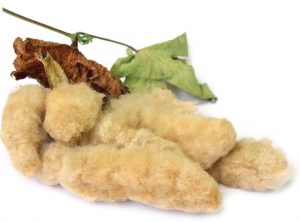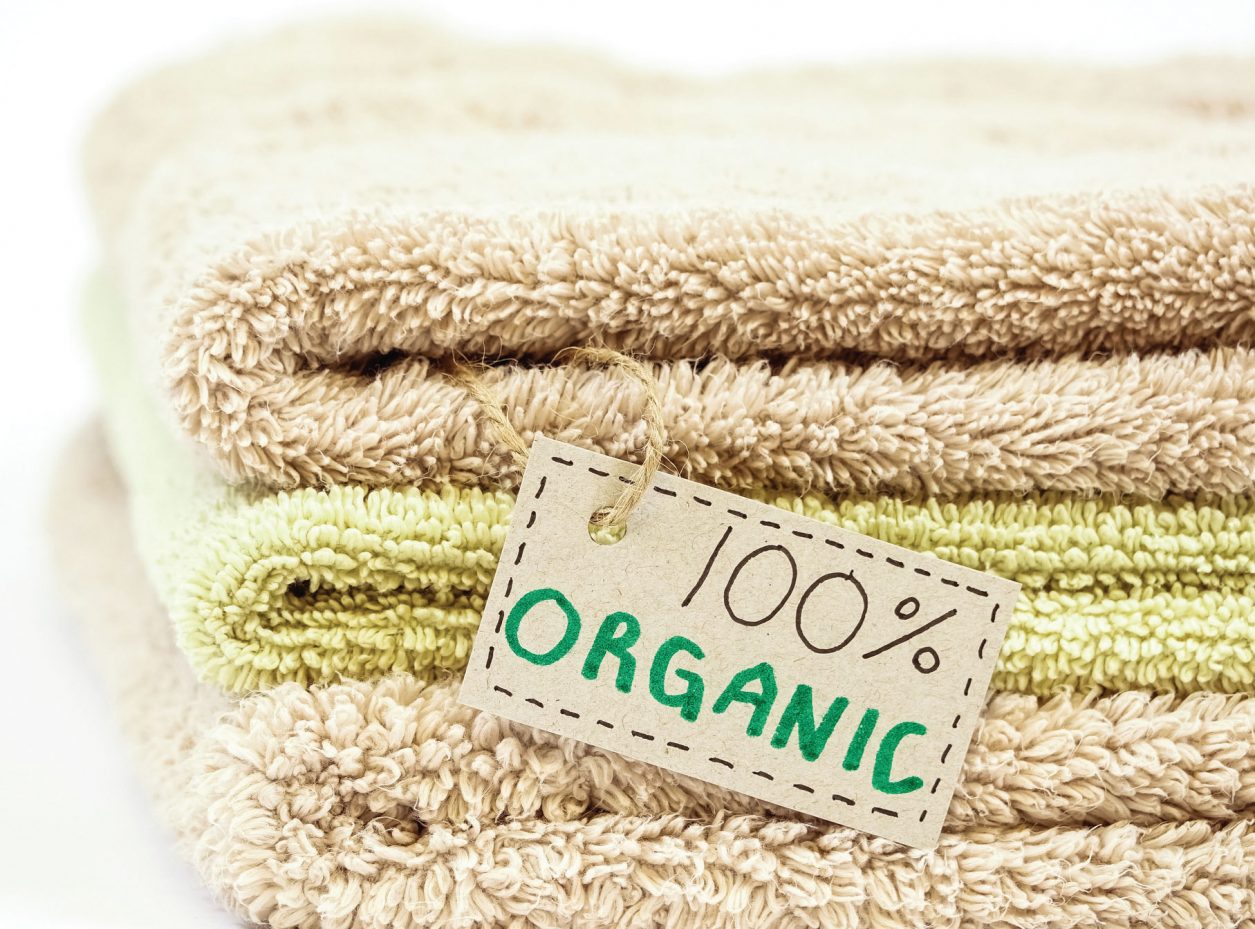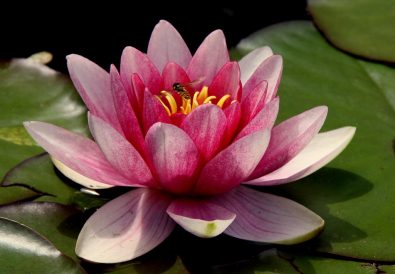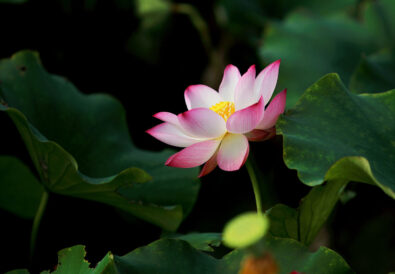“Isn’t all cotton organic?” my aunt asked over Christmas dinner. It took some explaining to get through to her that unfortunately the answer is no. During the course of conversation at our annual holiday family gathering, it came up that the skirt I wore for the occasion was made with organic cotton.
Back in the day, all things cotton had been considered “natural,” as opposed to clothing made with nylon or polyester— petroleum-based fabrics. And of course, cotton is certainly a natural product since the white puffs that are spun into thread are the protective fiber that surrounds cottonseeds on a cotton plant. It’s a wonderful fiber provided by nature that humankind was clever enough to make use of and eventually domesticate.
However, modern cotton crops are grown with the use of many chemicals most people have never even heard of. In fact, the US Environmental Protection Agency considers seven of the top fifteen pesticides used on cotton in the United States as “possible,” “likely,” “probable,” or “known” human carcinogens (causing cancer) such as acephate, dichloropropene, diuron, fluometuron, pendimethalin, tribufos, and trifluralin.
Pendimethalin? What the heck is that, you ask? It’s a toxic pesticide that kills the bane of all cotton farmers’ existences: the boll weevil. This is the main insect that likes to chew up valuable cotton crops. Due to this weevil, plus many other damaging pests, more insecticides are used on conventionally grown cotton than on any other single crop.
 Cotton crops are sprayed with about 25 percent of all insecticides used on all of the worlds’ crops combined, according to the Organic Trade Association, and about 10 percent of all the world’s pesticides combined (including herbicides, insecticides, and defoliants). According to the World Health Organization (WHO), 20,000 deaths occur each year from pesticide poisoning in developing countries, many of these from cotton farming. Agrochemical companies make on average $2 billion selling cotton pesticides each year. And, pressure to use chemicals also comes from banks, because they are more likely to offer loans to farmers when they believe that a crop is more secure from the threat of pests.
Cotton crops are sprayed with about 25 percent of all insecticides used on all of the worlds’ crops combined, according to the Organic Trade Association, and about 10 percent of all the world’s pesticides combined (including herbicides, insecticides, and defoliants). According to the World Health Organization (WHO), 20,000 deaths occur each year from pesticide poisoning in developing countries, many of these from cotton farming. Agrochemical companies make on average $2 billion selling cotton pesticides each year. And, pressure to use chemicals also comes from banks, because they are more likely to offer loans to farmers when they believe that a crop is more secure from the threat of pests.
Sadly, crops sometimes do still fail. Some farmers in India get so in over their heads with debt to chemical companies by buying more and more seed and pesticides that there has been a rash of farmer suicides over the past few years. In fact, some swallow the pesticides themselves to commit the act. “According to the National Crime Records Bureau (NCRB) data from 2009, more than 216,000 farmers have killed themselves since 1997. Add the figures for 1995, 1996, and 2010 and the total crosses 250,000. That is, two farmers a day for the past fifteen years.”
Cotton processing also entails the use of chemicals. Typically sodium hydroxide (a type of salt) and chelating agents are used to increase luster and help the cotton absorb dye better (mercerization); then acetic acid is used as a neutralizer.“Usual salt concentrations in cotton mill wastewater can be 2,000 – 3,000 ppm, far in excess of Federal guidelines for in-stream salt concentrations of 230 ppm, so treatment of effluent is very important.”
Before it is woven into fabric, cotton may be treated with the biocide pentachlorophenols (PCPs), to protect it from rotting during storage and transport. PCPs are associated with the development of cancers, abnormal reproductive effects and nerve damage, and are thus outlawed from effluents in the US and the European Union. Most conventional cotton is treated with chlorine bleach as well to make it optic white, just for aesthetic reasons, since people associate the whiteness of the fabric with cleanliness. Though sold as a common household cleaner, chlorine bleach is corrosive and is associated with health effects such as eye, skin, and airway irritation at low levels, and “tightness, wheezing, dyspnea, and bronchospasm” at higher levels. It is also highly toxic to fish and other aquatic creatures if it finds its way to waterways.
The Organic Consumers Association (OCA) points out that in addition to pesticide use, 94 percent of the US cotton crop is genetically modified. They conclude, Cotton is the most toxic crop in the world. Not something most people are usually thinking about when buying a pair of jeans.
What does this mean for me?
Common sense says probably some small amount of chemicals from the processing, and certainly dyes, would end up being absorbed through our skin. According to wardrobeadvice.com: “To dye a pair of jeans, synthetic indigo dye is made with a combination of caustic soda, sodium phenylglycinate and sodamide to form a chemical called indoxyl. The sodium phenylglycinate in the mixture is made from a chemical made in another chemical process by adding ammonia to a chemical called chlorobenzene. This process begins with another chemical that can come from either petroleum or coal. Because petroleum and coal are both inexpensive, many fabric dyes are currently made in a similar fashion.
According to the article Your Cotton T-shirt May Be Poisoning You by Kathleen Barnes, in processing conventional cotton to its final stage as clothing, chemicals are often added at each stage—silicone waxes, petroleum scours, fabric softeners, heavy metals, flame and soil retardants, ammonia, and even the carcinogen formaldehyde. These chemicals might be even more of a health issue than the pesticides. On some level we may know these clothes contain chemicals because we can smell them when we bring them home from the store.
So what’s a fashionista supposed to do based on little clear scientific evidence? Well, in the world of environmental health, there has been a principle floated since the 1992 Rio Conference called the Precautionary Principle. It states: If an action or policy might cause severe or irreversible harm to the public or to the environment, in the absence of a scientific consensus that harm would not ensue, the burden of proof falls on those who would advocate taking the action. In other words, if a company is about to release a product that might make people sick, they should have to prove that it’s safe first, not release it for public consumption and then see if it causes harm. When the EPA reviews the health effects of chemicals, they consider them one chemical at a time. However, people are exposed to many chemicals in our environment (clothing, water, food), and though these exposures are typically at very low levels, the cumulative and synergistic effects of the mixture of pesticides and other chemicals in our environment is not easily studied, so we don’t really know the effects for sure.
Ecofashionista Recommendation:
We can frame the “Consumer’s Precautionary Principle” this way: If I am about to purchase a product that I am not sure is safe for myself and my family (and I suspect may not be safe for everybody else), then I will choose the safer alternative whenever one is available. A second level of action would be to then petition our government for stricter regulations for such products. Another action would be to contact the company and ask questions about their practices, and write about the response on a blog, social media, or op-ed in the newspaper. Take action for fashion!
Organic Cotton: Why is it Green?
The good news is there is a growing organic cotton industry and market so we can choose an alternative. Organic cotton is grown using natural methods without the use of synthetic pesticides or fertilizers and is not genetically modified. Organically maintained soil helps reduce pollution and sequesters more carbon than conventionally farmed soil. As more farmers start to see the negative health effects of pesticides in their own lives, and as consumers are beginning to demand more and more “green” products, products labeled “organic” from food items to clothing have taken off and become rapidly growing economic sectors over the past decade. There is a momentum of change in the consumer spirit, and awareness is taking root!
Reprinted with permission from The Green Wardrobe Guide, Finding EcoChic Fashions that Look Great and Help Save the Planet by Beth Fiteni, © 2018 by Green Inside and Out/IngramSpark.

 Beth Fiteni, MSEL is the director of Green Inside & Out, based on Long Island, NY. Fiteni has worked for over twenty years as a professional environmental advocate on toxins reduction and climate change. She holds a master of studies in environmental law, and is host of an award-winning environmental radio show. Fiteni lectures all over Long Island on green living, and has been featured in numerous media outlets such as News 12, WNBC News 4, Fios1, and Newsday. Fiteni was awarded the Long Island Sierra Club Environmentalist of the Year in 2017, and won the EPA’s Environmental Quality award 2010 for her work in co-creating educational materials on children’s environmental health. She offered a TEDx Talk entitled “The Toxic Talk: Your Power Over Pollutants” at Adelphi University in March 2018 See www.GreenInsideandOut.org for her blog and more information.
Beth Fiteni, MSEL is the director of Green Inside & Out, based on Long Island, NY. Fiteni has worked for over twenty years as a professional environmental advocate on toxins reduction and climate change. She holds a master of studies in environmental law, and is host of an award-winning environmental radio show. Fiteni lectures all over Long Island on green living, and has been featured in numerous media outlets such as News 12, WNBC News 4, Fios1, and Newsday. Fiteni was awarded the Long Island Sierra Club Environmentalist of the Year in 2017, and won the EPA’s Environmental Quality award 2010 for her work in co-creating educational materials on children’s environmental health. She offered a TEDx Talk entitled “The Toxic Talk: Your Power Over Pollutants” at Adelphi University in March 2018 See www.GreenInsideandOut.org for her blog and more information.



















